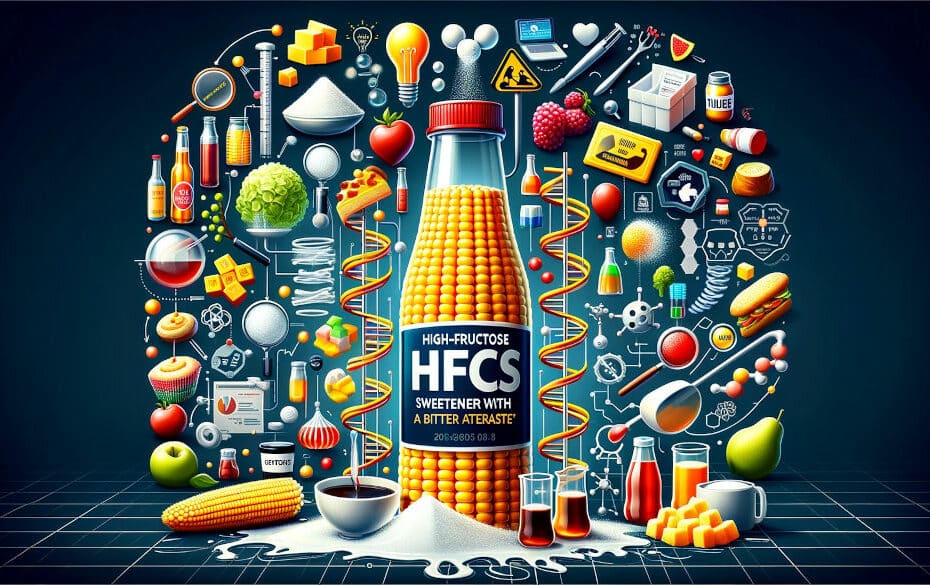Last Updated on July 7, 2024 by Max
Welcome to the Twelfth Part of Our Food Safety Series
In our ongoing series about food safety standards, we now turn to High-Fructose Corn Syrup (HFCS), a pervasive sweetener in many processed foods and drinks. Despite its economic benefits for food production, HFCS has been linked to various health issues. This segment explores the health concerns associated with HFCS consumption, including its potential link to obesity and diabetes, and contrasts the regulatory approaches of the EU and the U.S.
High-Fructose Corn Syrup (HFCS) is a common sweetener found in a wide range of processed foods and beverages, from sodas and fruit-flavored drinks to candies, baked goods, and certain types of bread (Rippe & Angelopoulos, 2016). Its use in the food industry primarily comes down to economics: HFCS is cheaper to produce and easier to handle in industrial food production compared to traditional cane or beet sugar.
However, the widespread use of HFCS has raised health concerns. Studies suggest that the consumption of HFCS can contribute to weight gain, metabolic syndrome, and non-alcoholic fatty liver disease (Stanhope et al., 2009; Abdelmalek et al., 2010). Additionally, a high intake of HFCS has been linked to an increased risk of type 2 diabetes (Schulze et al., 2004).
In the European Union, the use of HFCS is not outright banned, but it is heavily restricted. The EU’s Common Agricultural Policy imposes production quotas on isoglucose (a term used in the EU to refer to HFCS), effectively limiting its use (European Commission, 2017).
On the other hand, there are no such restrictions in the United States, and HFCS continues to be widely used. This difference in regulation, once again, reflects differing attitudes towards food safety and public health between the two regions.
What are your thoughts on the use of HFCS? Do you try to limit your intake of foods and drinks that contain this sweetener?
Conclusion
As we conclude our examination of High-Fructose Corn Syrup, the different regulatory approaches between the EU and the U.S. reflect deeper concerns about public health and food safety. HFCS’s widespread use, despite health risks, raises questions about consumer awareness and the role of economic factors in food production choices. How do you approach HFCS in your diet? Do these concerns influence your food and beverage selections?
References
- Rippe, J.M., & Angelopoulos, T.J. (2016). Sucrose, High-Fructose Corn Syrup, and Fructose, Their Metabolism and Potential Health Effects: What Do We Really Know? Advances in Nutrition, 4(2), 236-245.
- Stanhope, K.L., et al. (2009). Consuming Fructose-Sweetened, Not Glucose-Sweetened, Beverages Increases Visceral Adiposity and Lipids and Decreases Insulin Sensitivity in Overweight/Obese Humans. The Journal of Clinical Investigation, 119(5), 1322-1334.
- Abdelmalek, M.F., et al. (2010). Increased Fructose Consumption Is Associated with Fibrosis Severity in Patients with Nonalcoholic Fatty Liver Disease. Hepatology, 51(6), 1961-1971.
- Schulze, M.B., et al. (2004). Dietary Pattern, Inflammation, and Incidence of Type 2 Diabetes in Women. The American Journal of Clinical Nutrition, 82(3), 675-684.
- European Commission. (2017). EU Sugar Market Observatory. Brussels: European Commission
